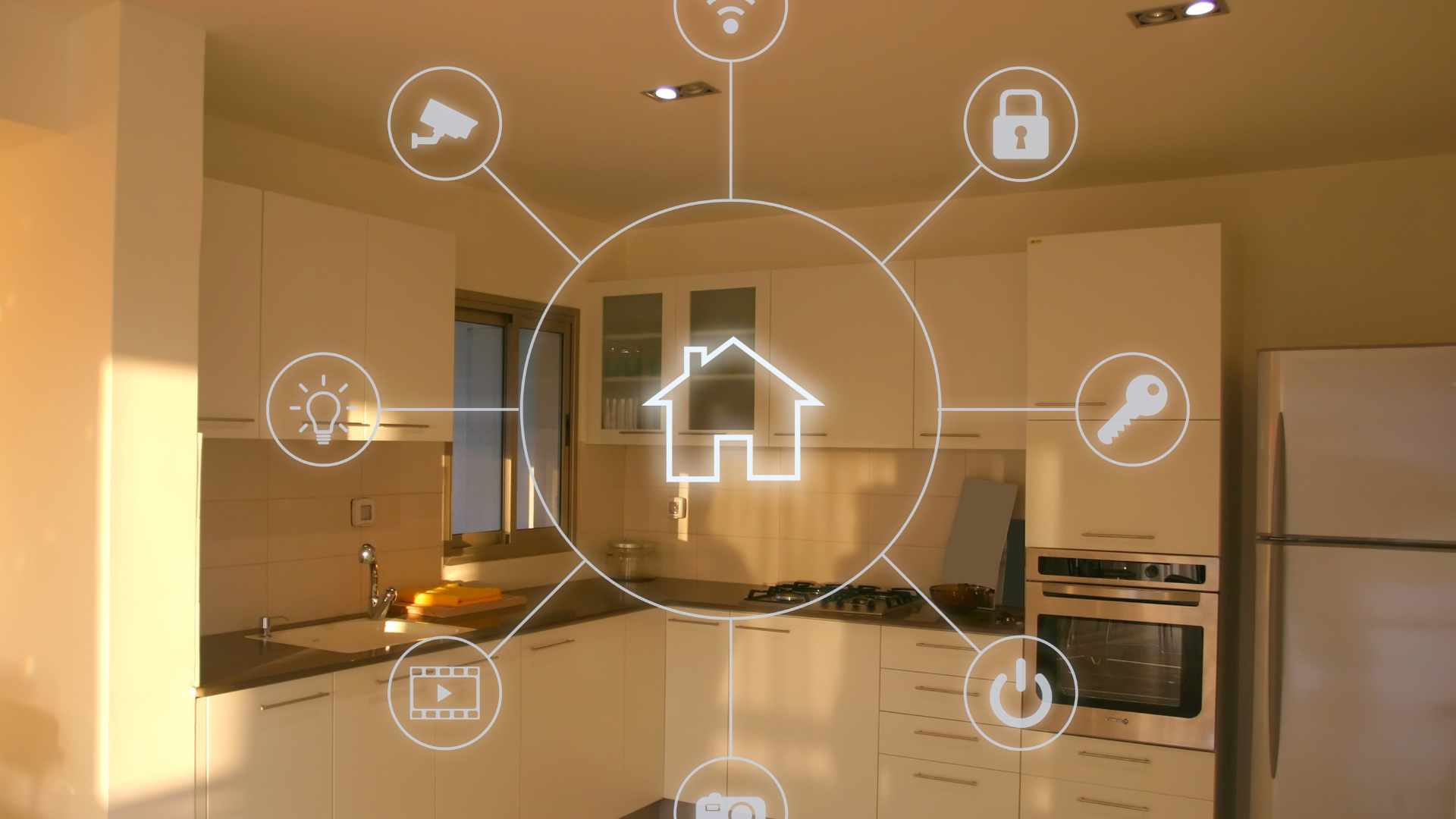As organisations increasingly migrate their operations to the cloud, there is a growing need for advanced security systems that can scale and adapt to changing demands. This shift has given rise to cloud-based automated security systems, which offer many advantages over traditional on-premises solutions.
Cloud-based automated security systems bring enhanced scalability and flexibility, enabling businesses to manage security across multiple locations and user bases efficiently. These systems are designed to handle increased workloads seamlessly, ensuring continuous protection and operational efficiency. This blog will explore the key benefits of adopting cloud-based automated security systems, focusing on enhanced scalability, cost efficiency, improved accessibility, advanced threat detection, and data security compliance.
Cloud-based security solutions provide a future-proof IT infrastructure whether you’re looking to streamline your access control processes, reduce operational costs, or ensure robust disaster recovery mechanisms. Discover how cloud-based automated security systems can transform your organisation’s security landscape, offering unmatched flexibility, reliability, and efficiency.
Advantages of Cloud-Based Automated Security Systems
Enhanced Scalability and Flexibility
Embracing cloud-based solutions for access control and scalability offers significant advantages in management simplicity, security, cost efficiency, and flexibility. Organisations can scale their operations seamlessly, respond to changing demands effectively, and ensure robust disaster recovery mechanisms, thereby achieving a future-proof IT infrastructure.
In the contemporary digital era, organisations are increasingly adopting cloud-based solutions to leverage their scalability and flexibility. This transition is driven by the need to handle growing data volumes, enhance security, and optimise operational efficiency. Below is a comprehensive exploration of these benefits based on the insights from various sources.
Cloud-Based Access Control Solutions
Cloud-based access control systems have revolutionised how organisations manage security. These solutions offer several advantages over traditional on-premises systems, especially in terms of scalability and flexibility.
Cloud Scalability and Flexibility
Cloud scalability refers to a system’s ability to handle increasing workloads by scaling up (vertical scaling) or out (horizontal scaling). It is crucial for adapting to changing business demands and ensuring high performance and reliability.
Cost Efficiency
The cost efficiency of cloud computing lies in its ability to eliminate the need for substantial upfront investments, reduce ongoing maintenance and operational costs, and provide scalable and flexible solutions that adapt to business needs. By leveraging cloud services, organisations can achieve significant cost savings while enhancing their operational efficiency and productivity.
The adoption of cloud computing has transformed how businesses operate by offering significant cost savings and operational efficiencies. Here are some key ways in which cloud-based solutions drive cost efficiency, based on insights from various industry sources.
Improved Accessibility and Remote Management
Cloud-based access control systems offer significant advantages in terms of accessibility, remote management, security, and cost efficiency. By leveraging these systems, organisations can enhance their security posture, reduce operational costs, and ensure seamless scalability as their needs evolve. Adopting cloud-based solutions is a strategic move that empowers businesses to maintain robust security while enjoying the flexibility and convenience of remote management. These systems provide unparalleled remote management capabilities, allowing businesses to maintain robust security without the constraints of on-premises hardware.
Cloud-based access control systems allow administrators to manage security from anywhere at any time using a smartphone, tablet, or computer. Real-time updates and alerts ensure that administrators can respond to incidents immediately, minimising risk and enhancing security.
Advanced Threat Detection and Response
Advanced Threat Detection and Response is essential for protecting organisations from the myriad of cyber threats they face today. By implementing robust TDR strategies, leveraging advanced technologies, and following best practices, organisations can enhance their security posture, ensure compliance with regulations, and minimise the impact of potential cyber incidents.
What is Threat Detection and Response?
Threat Detection and Response (TDR) involves identifying, analysing, and mitigating security threats to an organisation’s systems and data. It is a continuous process that includes threat hunting, detection, investigation, response, and recovery.
Enhanced Data Security and Compliance
Enhanced data security and compliance are paramount for organisations operating in the cloud. By implementing robust data protection measures, adopting advanced threat detection technologies, and following best practices, businesses can safeguard their sensitive information, maintain regulatory compliance, and build trust with their customers. As the cloud landscape continues to evolve, staying proactive and vigilant in data security efforts will ensure long-term resilience and success. As businesses increasingly rely on cloud-based storage and management, robust data protection measures are essential to safeguard sensitive information.
Understanding Data Security in the Cloud
Data security encompasses the technologies and processes used to protect sensitive information from unauthorised access, data breaches, and other cyber threats. With the majority of enterprise data now stored in the cloud, it is crucial to understand the complexities and unique challenges associated with cloud data security.
Best Practices for Implementing Cloud Data Security
Identify and Classify Sensitive Data:
Gain visibility into critical data by discovering and classifying structured and unstructured data across all cloud environments. This helps in applying appropriate security measures based on data sensitivity.
Limit Access to Resources:
Apply role-based and attribute-based access controls to ensure that users have the minimum necessary access required for their job functions.
Encrypt Data in Transit and at Rest:
Use strong encryption techniques to protect data during transmission and storage, ensuring that it remains secure even if accessed by unauthorised individuals.
Continuously Monitor Real-Time Data Risk:
Implement continuous monitoring solutions to detect and respond to data security threats in real-time. This includes using threat intelligence and modelling to stay ahead of emerging threats.
Document and Aggregate Security Posture:
Maintain comprehensive documentation of data security measures and aggregate monitoring and remediation activities in a centralised location. This provides a clear overview of the organisation’s security posture and compliance status.
Conclusion
The digital transformation rapidly reshaping business landscapes, cloud-based automated security systems have emerged as indispensable tools for enhancing security, scalability, and operational efficiency. These advanced systems offer numerous benefits over traditional on-premises solutions, allowing organisations to manage security across multiple locations and adapt to changing demands seamlessly.
Cloud-based security solutions simplify management, improve security with robust encryption and real-time monitoring, and reduce costs through pay-as-you-go models and minimal hardware investments. The ability to scale resources dynamically ensures that businesses can handle increasing workloads without rearchitecting their systems, maintaining high performance and reliability.
These systems offer unparalleled remote management capabilities, allowing 24/7 accessibility, centralised control, and seamless integration with other business applications. Enhanced threat detection and response mechanisms, powered by AI and machine learning, provide proactive security measures that protect organisations from evolving cyber threats.
Adopting cloud-based automated security systems is not just a strategic move for the present but a future-proof investment that ensures robust disaster recovery, compliance with regulatory standards, and long-term resilience. As the digital landscape continues to evolve, organisations that leverage these advanced security solutions will be well-equipped to maintain a secure, efficient, and flexible IT infrastructure, driving their success in the modern business environment.
By embracing cloud-based automated security systems, businesses can transform their security posture, achieve significant cost savings, and enhance their overall operational efficiency, positioning themselves for sustained growth and competitive advantage in the digital age.
FAQs About Automated Security Systems
What Are The Main Benefits Of Cloud-Based Automated Security Systems Compared To Traditional On-Premises Solutions?
Cloud-based automated security systems offer enhanced scalability and flexibility, allowing businesses to manage security across multiple locations efficiently. They reduce the need for extensive hardware investments, provide real-time monitoring, and enable seamless updates and maintenance. Additionally, these systems offer cost savings through pay-as-you-go pricing models and reduce operational complexity.
How Do Cloud-Based Automated Security Systems Improve Data Security And Compliance?
These systems enhance data security through robust encryption protocols, multi-factor authentication, and real-time monitoring. They provide detailed access logs and reports to help organisations comply with industry regulations such as GDPR and HIPAA. Regular audits by cloud service providers ensure that security measures are up-to-date and effective.
Can Cloud-Based Automated Security Systems Integrate With Existing Business Applications And Systems?
Yes, cloud-based security systems are designed for seamless integration with various business applications, including HR platforms, visitor management systems, and video surveillance. They often use well-documented APIs and standard protocols, creating a comprehensive security ecosystem and streamlining operations.
What Makes Cloud-Based Security Systems More Cost-Effective Than Traditional Security Solutions?
Cloud-based security systems eliminate the need for substantial upfront investments in physical servers and infrastructure. They reduce ongoing maintenance and operational costs through automatic updates and remote support. The pay-as-you-go pricing model ensures that organisations only pay for the resources they use, further enhancing cost efficiency.
How Do Cloud-Based Security Systems Enhance Scalability And Flexibility For Businesses?
These systems can easily scale up or down to meet changing business needs without requiring significant hardware upgrades. They allow businesses to add or remove users and manage multiple locations with minimal manual intervention. This scalability ensures that organisations can adapt to increased workloads and evolving security demands efficiently.


